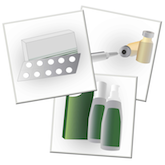Testosterone therapy for men with clinically low testosterone can potentially improve health and quality of life. However, it is important to watch out for the most common testosterone replacement mistakes.
Common Testosterone Replacement Mistakes
1. Using Too Much Testosterone. Testosterone replacement therapy (TRT) is just that: REPLACEMENT. To achieve optimal results your dosing regimen should be set to return low testosterone levels to normal levels. A testosterone level above normal levels (generally considered to be between 300 and 1000 ng/dl) will not increase the benefits of TRT.
2. Using “Street Sources” of Testosterone. First, buying testosterone without a prescription is ILLEGAL. Whether you agree with the law or not, testosterone is a controlled substance under the Anabolic Control Act of 1990. In certain states, possession without a prescription is a misdemeanor; while in others, it is a felony.
Second, “street” testosterone can be dangerous. Dosages may be incorrect, the drug itself may not be sterile, or the substance may be something other than testosterone, such as sesame or peanut oil.
3. Not Following Up with Your Doctor. When you start testosterone replacement therapy (TRT), your doctor will likely put you on an initial dose below the level that you actually require. This initial dose may actually be too low or too high. Your doctor will then need to recheck your testosterone level repeatedly over time and will adjust the dose accordingly until you reach a stable, therapeutic level.
Additionally, your doctor will use follow-up visits to monitor your cholesterol levels, prostate health, and hematocrit levels to monitor for likely side effects.
4. Cycling On and Off Testosterone. Many men falsely believe that they should cycle testosterone on and off to give their bodies periodic breaks from the medication. This is a common misconception drawn from anabolic steroid use by bodybuilders and athletes, who use higher than normal doses for the sake of excess muscle growth. These supraphysiologic doses put excess stress on the body, so users must periodically stop the medication to allow their bodies to recover and restore normal testicular function.
This is not the case for users of TRT at the physiologic doses prescribed by their physicians. Do NOT cycle on and off your regimen. Testosterone replacement therapy is a life-long commitment. Stopping abruptly can quickly cause a return or even worsening of the symptoms of testosterone deficiency, such as weight loss, depression, lack of motivation, and loss of sex drive, among others.
5. Not Complying with Your Regimen. Whether by forgetfulness, neglect, or intention, noncompliance with medications is a common problem for users of TRT. This noncompliance may diminish the positive effects of TRT. It is essential to remain diligent with your testosterone regimen to maintain its positive results. If you are having difficulty following your regimen, talk to your physician about alternative administration methods that may require less of your attention.
6. Not Knowing How to Manage Side Effects. Side effects occur with every medication. If side effects occur, such as swelling of the nipples, swelling of the arms or legs, acne, moodiness, hair loss, increased prostate specific antigen levels, and/or perceived lack of benefit, do not despair. Fixing the problem(s) may be as simple as changing your dosage or changing your administration method. However, eliminating side effects may require more commitment to eliminating lifestyle choices that counteract testosterone replacement therapy.
Updated: April 17, 2015





